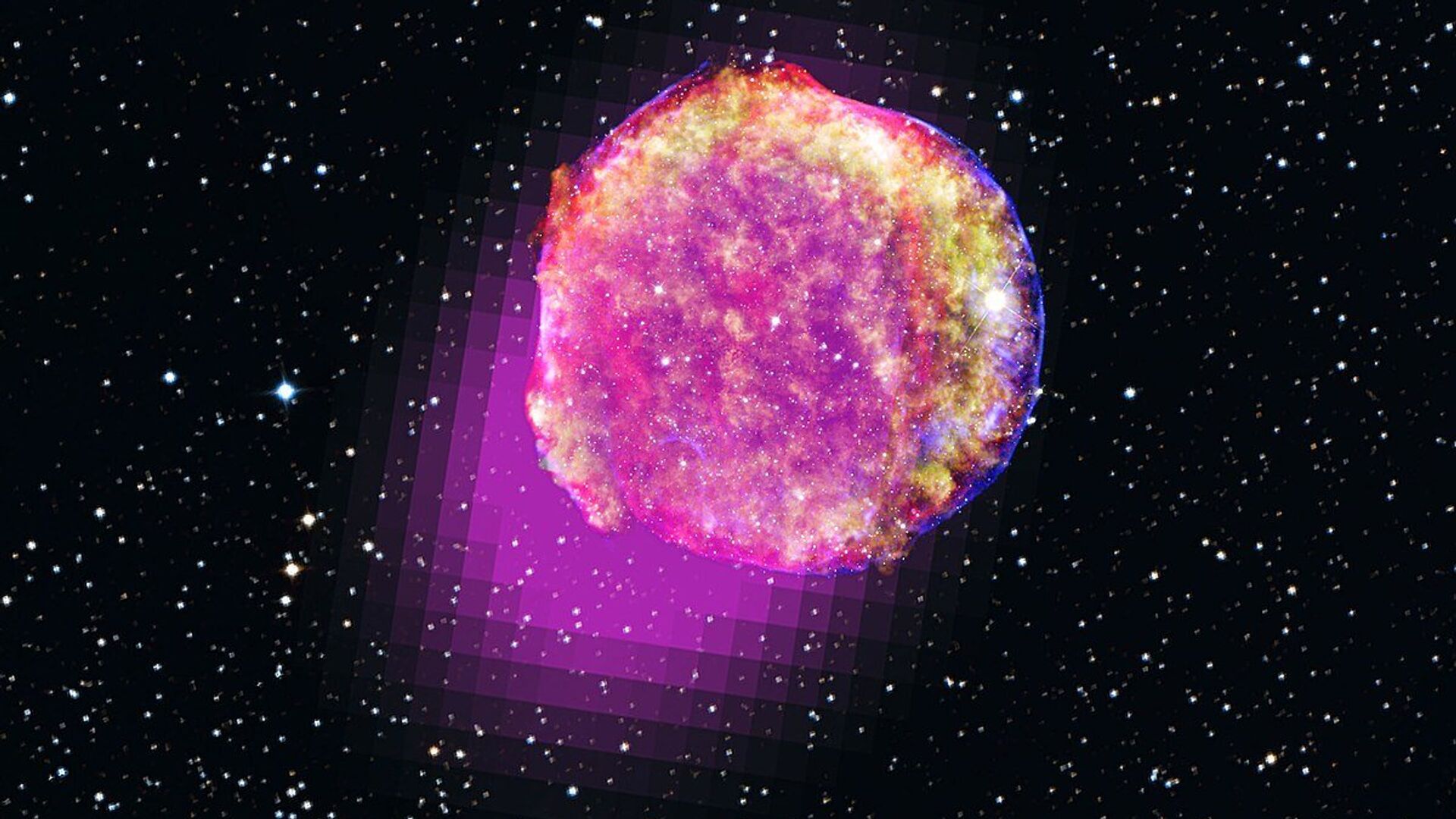Gamma Rays Detected Coming From Nearby Galaxies For The First Time, New Study Claims
16:19 GMT 11.11.2021 (Updated: 19:34 GMT 03.11.2022)
Subscribe
Gamma rays are a form of electromagnetic radiation, which is transmitted in waves of particles. They have the smallest wavelength, the most energy of any wave in the electromagnetic spectrum and are produced by the hottest and most energetic objects in the universe, such as neutron stars and pulsars, supernova explosions.
An international group of scientists claims to have detected gamma rays coming from nearby galaxies for the first time. In their research, the astronomers used the Large Area telescope as well as a stacking technique, which combines signals too weak to be observed on their own.
According to the findings of their study, published in The Astrophysical Journal this week, gamma rays were coming from ultra-fast outflows, the most extreme winds launched from very close supermassive black holes.
Study leader, Chris Karwin, a postdoctoral fellow in the Department of Physics and Astronomy at Clemson University in South Carolina, says their discovery will shed light on what happened in galaxies early on. The ultra-fast outflows are thought to play a significant role in how supermassive black holes and galaxies grow, scientists say.
Study leader, Chris Karwin, a postdoctoral fellow in the Department of Physics and Astronomy at Clemson University in South Carolina, says their discovery will shed light on what happened in galaxies early on. The ultra-fast outflows are thought to play a significant role in how supermassive black holes and galaxies grow, scientists say.
"Our gamma-ray observations show how supermassive black holes can transfer a large amount of energy to their host galaxy. These UFOs create shock waves, which act like pistons and actually accelerate charged particles, known as cosmic rays, to near the speed of light," Karwin said.
Researchers believe that Sagittarius A, a supermassive black hole, which is located at the centre of our galaxy, was active and produced ultra-fast flows. This hypothesis, scientists say, may explain the existence of Fermi bubbles, mysterious structures, which are located above and below the centre of the Milky Way. Discovered in 2010 with the help of NASA’s Fermi Gamma-ray Space Telescope (hence the name), the bubbles span a total length of about 50,000 light years.
According to Karwin, these enigmatic structures could be remnants of the ultra-fast outflows' activity that occurred near Sagittarius A.
According to Karwin, these enigmatic structures could be remnants of the ultra-fast outflows' activity that occurred near Sagittarius A.

